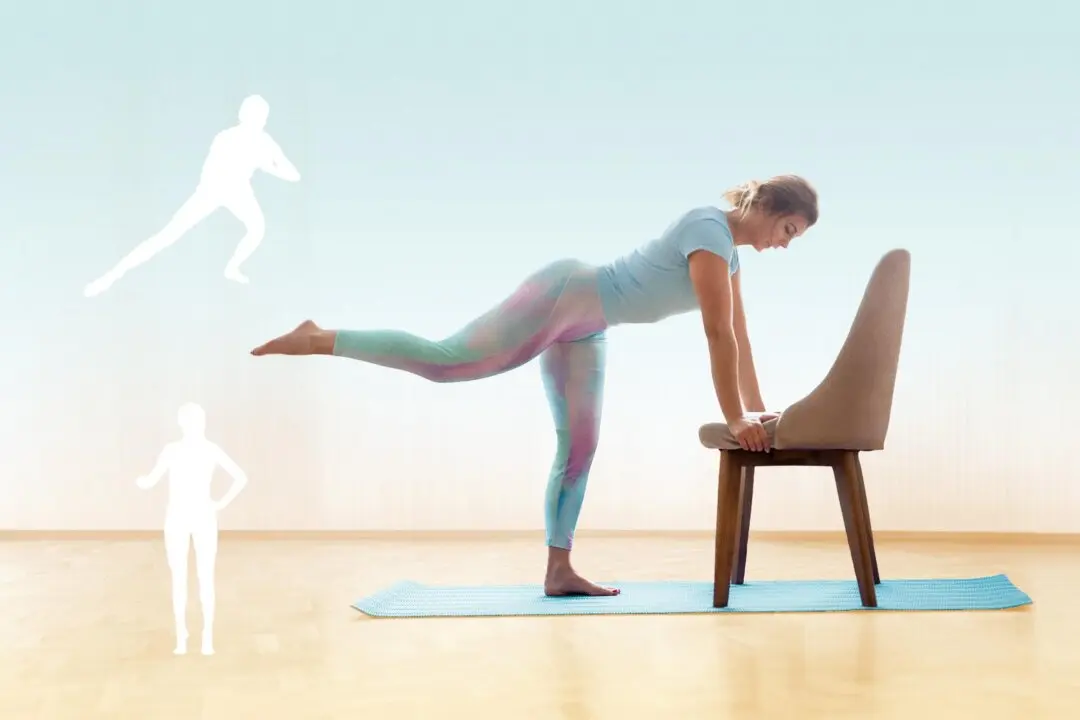
The Epoch Times, Getty Images
Many of us believe that effective exercise requires sweating and panting. However, exercise intensity depends on both the cardiorespiratory load and the tension exerted on the muscles to achieve their control and stability. Eccentric exercises, which involve slowly lengthening muscles, help strengthen tendons, improve flexibility, and increase strength. They require no special equipment and can be done at home.
- Concentric: Muscles shorten to generate force, such as lifting dumbbells.
- Eccentric: Muscles are stretched while maintaining tension, such as in slowly lowering dumbbells.
- Isometric: Muscle length remains constant while tension is maintained, such as in the plank exercise.
Most people focus on concentric contractions when exercising to significantly increase muscle size. However, the key to improving control and stability lies more in eccentric contractions. For example, descending stairs is a classic eccentric exercise—muscles lengthen as you support your body weight. When descending stairs, the quadriceps (front thigh), gluteal, and calf muscles must coordinate to prevent the body from falling. This delicate control strengthens our muscles and teaches the nervous system to react and regulate force more responsively.
Benefits of Eccentric Contraction
In addition to strengthening muscle control and stability and improving balance through long-term practice, eccentric contraction also offers the following health benefits:
1. Maintains Fast-Twitch Fibers, Slowing Sarcopenia
Eccentric contractions primarily activate fast-twitch fibers, which are responsible for speed and explosive power—capabilities that are prone to decline with age. Eccentric training can thus help middle-aged and older adults maintain muscle function, reduce sarcopenia, and reduce the risk of falls.
2. Promotes Fascial Elasticity, Reducing Stiffness and Pain
As we age, our fascia (connective tissue) gradually stiffens and shortens, leading to decreased range of motion and pain. Eccentric training lengthens muscles and reshapes the fascia structure, restoring its elasticity and mobility. This is particularly helpful for those who sit for prolonged periods or suffer from fascial tightness.
3. Improves Muscle Toughness, Reducing Injury Risk
Eccentric training simultaneously enhances flexibility and strength, helping to prevent knee, hamstring, and calf strains. For runners, dancers, and older people, eccentric lower-limb exercises are especially practical and preventive.
4 Home Eccentric Training Tips
Want to enjoy the benefits of eccentric training at home? The following four exercises require minimal space and can be performed safely with just a chair.
1. Single-Leg Deadlift
Target muscles: Gluteus maximus, quadriceps, and hamstrings




















